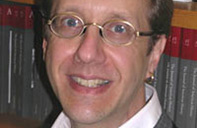A York University-based team has produced an international exhibit and archive that explores U.S. homophile magazine references to various regions in the world in the 1950s and 1960s.
Titled “U.S. Homophile Internationalism,” the exhibit showcases more than 1,000 lesbian, gay, bisexual and transgendered (LGBT) magazine references to Africa, Asia and the Pacific, Canada, Latin America, the Caribbean, the Middle East and Russia, the Soviet Union and Eastern Europe.

The project was headed by historian and York University Professor Marc Stein and a team of six graduate students at York University: Tamara de Szegheo Lang, Marva Milo and Healy Thompson, who are completing PhDs in gender, feminist and women’s studies; Carly Simpson, who is completing a PhD in history; Dasha Serykh, who is completing a PhD in social and political thought; and Shlomo Gleibman, who is completing a PhD in humanities.
The exhibit, featured on OutHistory.org, includes introductory essays, regional bibliographies and digitized images of letters to the editor, news and feature stories, and other items in the homophile press.
“U.S. Homophile Internationalism: An Online Archive and Exhibit of the 1950s and 1960s” is designed for students, scholars and everyone interested in the history of gender and sexuality.
The research team identified three primary uses of these materials: researchers interested in the history of the six regions might find useful references, representations and sources pointing to additional research prospects; researchers interested in the U.S. might use the material to consider how the U.S. was or was not influenced by other countries; and researchers interested in transnational and international communications may use these materials to consider how homophile magazines may have been used as conveyors of textual and visual representations circulated around the world.
“We hope the feature will inspire new work on international, transnational and global LGBT history,” says Stein.


